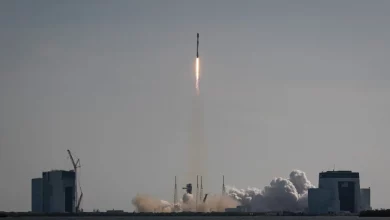Chinese scientists complete a concept study for a 6-meter space telescope to find habitable exoplanets

We have discovered more than 5,400 planets in the universe. These worlds range from hot jovians that closely orbit their star to warm ocean worlds to cold gas giants.
While we know they are there, we don’t know much about them. Characteristics such as mass and size are fairly straightforward to measure, but other properties such as temperature and atmospheric composition are more difficult. So the next generation of telescopes will try to capture that information, including one proposed telescope from the Chinese National Space Administration.
Known as the Tianlin Mission, the proposed telescope would have a 6-meter primary mirror. That’s roughly the size of the primary mirror for the Webb Space Telescope. The goal of Tianlin, which means “neighbors of heaven,” would be to study the atmospheres of potentially habitable Earth-sized worlds.
It’s very difficult to study the atmospheres of distant worlds. There are only a few cases of exoplanets we can see directly, and these are large gas giants far from their star. We have yet to be able to see Earth-sized worlds close enough to their star to be in the habitable zone. That doesn’t necessarily mean we can’t study their atmospheres, just that we have to do it indirectly.
One way is to look at the spectra of light from a star as a planet transits the star. The planet blocks some of the starlight, and if it has an atmosphere that will also block some light. But the atmosphere will only block certain wavelengths of light. By studying the light absorbed by the atmosphere, we can understand the composition of the atmosphere, such as water vapor or oxygen. This is extremely difficult to do since only the tiniest portion of starlight will pass through the atmosphere to reach us.
The Tainlin proposal takes a different approach. Rather than waiting for a planet to transit its star, the Tainlin telescope would utilize a coronagraph. This is a small barrier in the telescope’s field of view that blocks the light of a star. Coronagraphs were first used to study the sun’s atmosphere, acting as a kind of artificial solar eclipse. By blocking direct light from a star, Tainlin could better capture light from orbiting planets. Even if a planet was too small to image, Tainlin could capture its spectra of light.
As outlined in a recent paper, accepted for publication in Research in Astronomy and Astrophysics, the Tainlin Mission could be ready to launch within the next 10 to 15 years with proper funding and could observe hundreds of Earth-like worlds during its five-year mission. Based on simulations, the Tainlin Mission could observe molecules such as water, oxygen, methane, and even chlorophyll. Taken together, this could confirm the presence of life on an exoplanet.
The proposal is still in the early stages, and there are many other planned missions, such as NASA’s LUVIOR mission and the European Space Agency’s PLATO and ARIEL missions. The race is on to discover new Earths and possibly even extraterrestrial life. With Tainlin, China hopes to ensure they are in the race as well.





